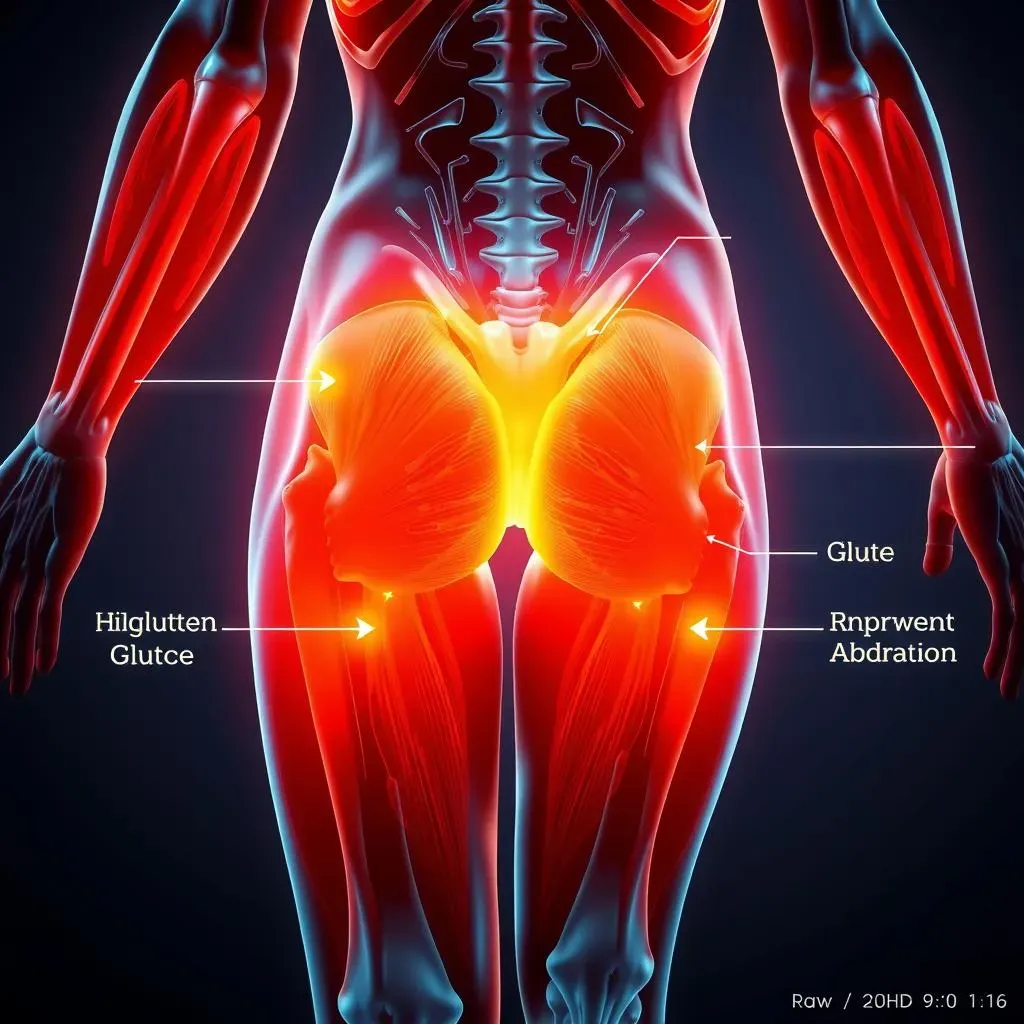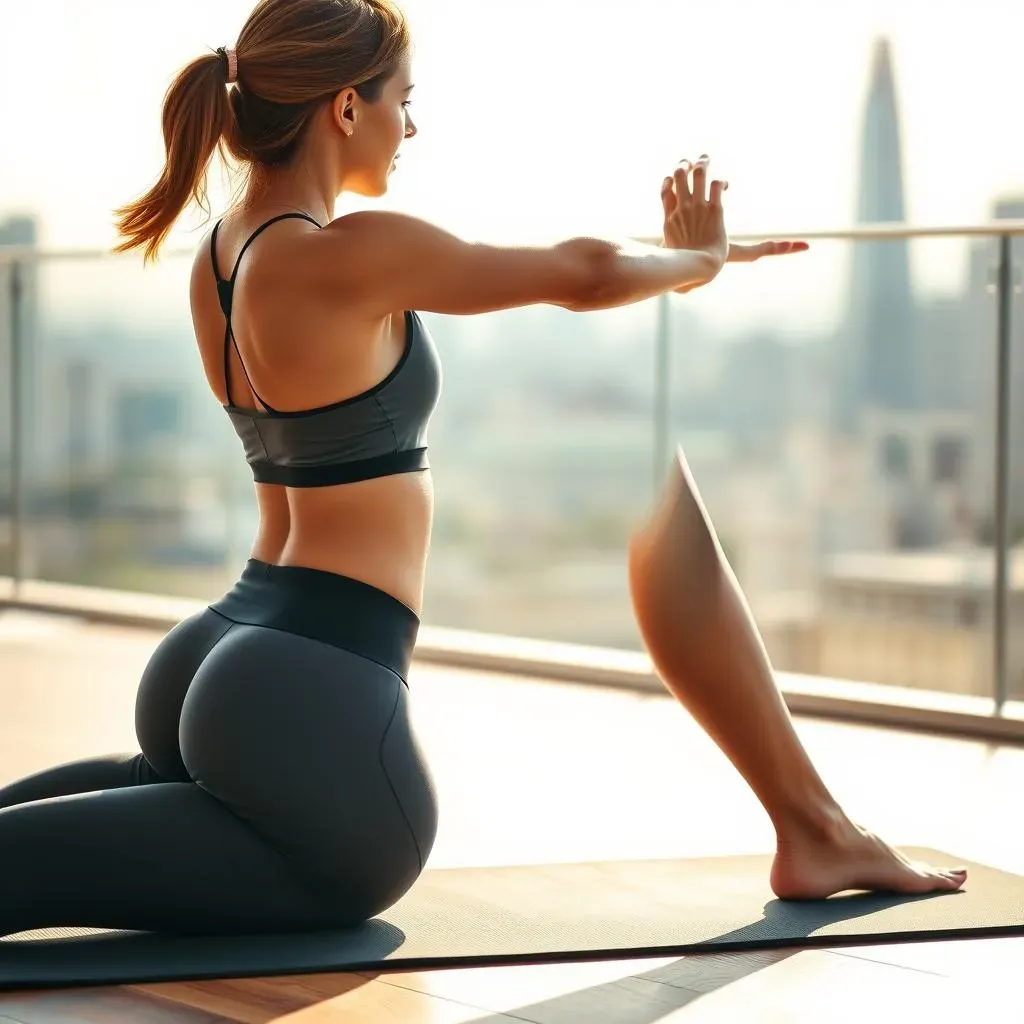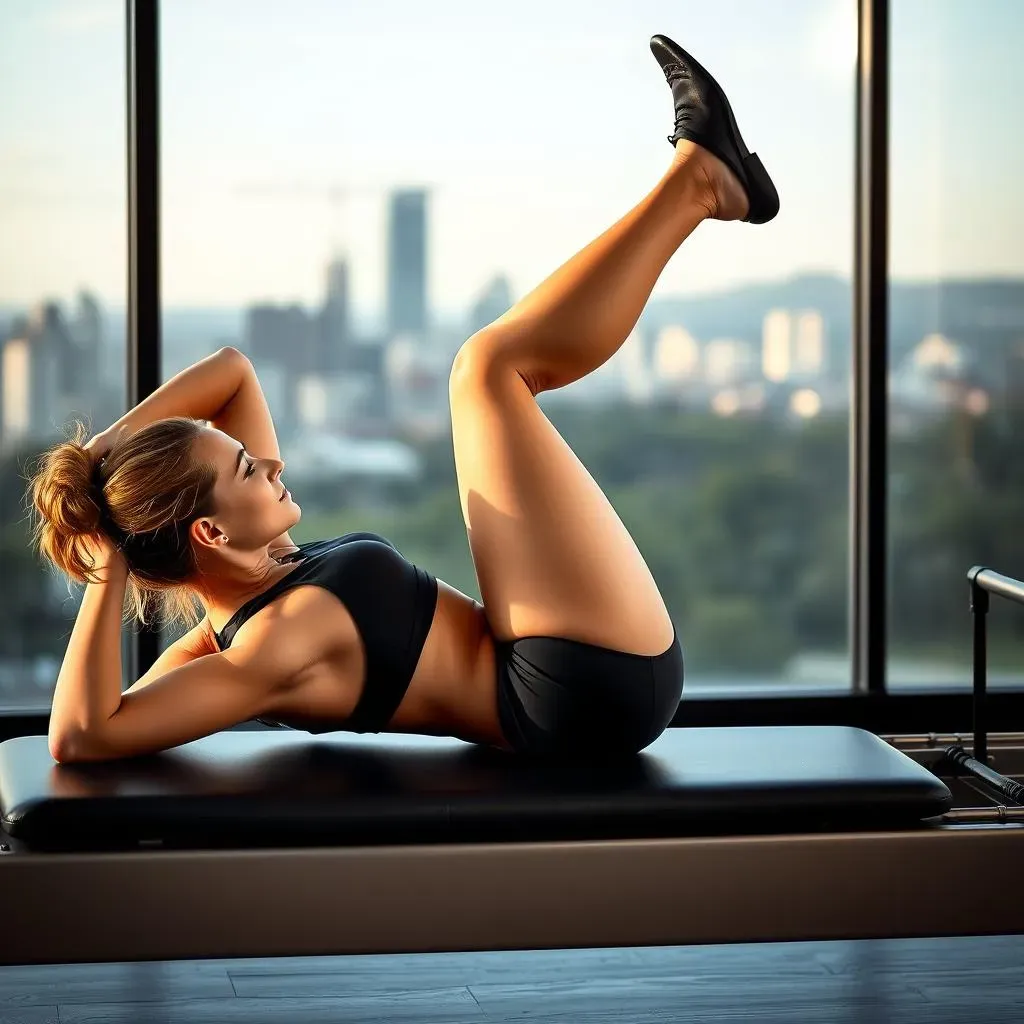Table of Contents
Ready to sculpt your dream glutes without stepping foot in a gym? This article is your ultimate guide to achieving a stronger, more toned backside using the power of Pilates – all from the comfort of your own home! Forget those grueling squats and complicated gym equipment; we'll show you how to target your glutes effectively with simple, yet highly effective, Pilates exercises. We'll break down the anatomy of your glutes, explaining why strengthening them is so crucial for posture, stability, and overall fitness. Then, get ready to learn a series of amazing Pilates moves designed to build strength, improve flexibility, and give you that enviable lifted look. We'll cover proper form, modifications for different fitness levels, and how to build a sustainable routine that fits your lifestyle. This isn't just another workout; it's a journey to a stronger, healthier you. So, let's dive into this amazing pilates workout at home for glutes and discover the power of Pilates for a fantastic physique!
Understanding Your Glutes: Anatomy and Importance

Understanding Your Glutes: Anatomy and Importance
Meet Your Glutes: The Power Trio
Let's talk glutes! They're not just for looks; these powerful muscles are your body's workhorses. Think of them as a team of three: the gluteus maximus (the biggest and strongest), the gluteus medius (the mid-range muscle), and the gluteus minimus (the smallest, but still important!). They work together to help you walk, run, jump, and even just stand up straight. A strong foundation, right? Neglecting them leads to weak posture, and potential back pain. So, let's give them the attention they deserve!
Want to know the secret to a killer glute workout? Focus on *activation*. That means making sure you're really *using* those muscles. It's not just about moving the weight; it's about feeling the burn in your glutes. This takes practice, but it’s worth it! Think of it like learning to play the guitar: at first, it feels clumsy, but with practice, you'll master the chords. Similarly, with consistent Pilates practice, you’ll feel your glutes engaging more effectively. Want a great starting point for glute exercises? Check out this beginner Pilates workout.
Glute Muscle | Primary Function | Pilates Exercises that Target it |
|---|---|---|
Gluteus Maximus | Hip extension, external rotation | Bridges, donkey kicks |
Gluteus Medius | Hip abduction, internal rotation | Side leg raises, clamshells |
Gluteus Minimus | Hip abduction, internal rotation | Side leg raises, hip circles |
Why Strong Glutes Matter: Beyond Aesthetics
Strong glutes aren't just about having a great-looking behind. They're essential for overall health and well-being. Think about it: your glutes are the largest muscles in your body. They help stabilize your pelvis and spine, which is crucial for good posture. Weak glutes can lead to lower back pain, knee pain, and even hip problems. Plus, strong glutes are important for athletic performance – imagine trying to sprint with weak glutes! You'd be like a car trying to race with a flat tire.
Building strong glutes can improve your balance, making you less prone to falls, especially as you get older. It's about more than just aesthetics; it's about functional fitness. It's about feeling strong and confident in your body. For a quick and effective workout, try this quick Pilates routine focusing on core strength, which works synergistically with strong glutes.
- Improved posture
- Reduced risk of injury
- Enhanced athletic performance
- Better balance and stability
- Increased core strength
Killer Pilates Moves for a Stronger Butt: Exercises and Techniques

Killer Pilates Moves for a Stronger Butt: Exercises and Techniques
Bridge Variations: The Foundation of Glute Strength
Let's start with the classic Pilates bridge. It's deceptively simple, but incredibly effective for building glute strength. Lie on your back with knees bent and feet flat on the floor. Engage your core and glutes, then lift your hips off the floor, squeezing at the top. Hold for a second, then slowly lower. That's one rep! Try 10-15 reps to start. Want to make it harder? Try a single-leg bridge, lifting one leg at a time. Or, elevate your feet onto a low step for extra resistance. Remember, proper form is key. Focus on the squeeze in your glutes – you should feel it working! Don't rush it. A slow and controlled movement is more effective.
Now, let's spice things up with some bridge variations. Try adding pulses at the top of the bridge for an extra burn. Or, try a "marching bridge," lifting one leg at a time while keeping your hips elevated. The possibilities are endless! Remember to focus on that glute activation – think about actively squeezing those muscles throughout the entire movement. Feeling adventurous? Try adding resistance bands for an extra challenge! This simple exercise is like a magic potion for your glutes!
- Classic Bridge: Basic glute activation
- Single-Leg Bridge: Increases stability and challenge
- Pulse Bridge: Adds intensity and muscle fatigue
- Marching Bridge: Improves coordination and strength
Clamshells: Targeting the Gluteus Medius
Next up: clamshells. This exercise is fantastic for targeting the gluteus medius, a muscle often neglected in traditional workouts. Lie on your side with knees bent and feet stacked. Keep your lower body still and lift your top knee towards the ceiling, focusing on the squeeze in your glute. Slowly lower back down. Repeat 10-15 reps per side. This is another exercise where slow and controlled movements are key. Try to really feel the burn in your outer hip. You'll be amazed by the results. This is a great exercise for those with hip pain and to help improve hip mobility. For an extra challenge, you can add a resistance band around your thighs.
Clamshells are surprisingly challenging! If you find it too easy, try adding a resistance band around your thighs for extra resistance. Or, try holding the top position for a few seconds before lowering. You might feel a little wobbly at first, but with practice, you'll get stronger and more stable. Want a longer workout? Check out this Pilates leg workout that also incorporates clamshells.
Modification | Description | Benefits |
|---|---|---|
Basic Clamshell | Lie on your side, knees bent, lift top knee | Gluteus medius activation |
Resistance Band Clamshell | Add band around thighs | Increased resistance and strength |
Clamshell with Hold | Hold at the top for a few seconds | Improved muscle endurance |
Donkey Kicks: Glute Powerhouse
Now, let's talk donkey kicks! Start on your hands and knees, with your hands shoulder-width apart and your knees hip-width apart. Engage your core, then lift one leg straight back, keeping your knee slightly bent. Squeeze your glute at the top, then lower back down. Repeat 10-15 reps per leg. This is a fantastic exercise for building glute strength and improving hip mobility. This exercise also engages your core, which is essential for stability. Pay attention to maintaining a neutral spine – no arching or sagging.
To make donkey kicks even more challenging, try adding a resistance band around your ankles. Or, try lifting your leg higher, or even pulsing at the top. The beauty of Pilates is the ability to tailor the exercises to your specific fitness level. You can always modify the exercise to make it easier or harder, depending on your needs. This is a great exercise to include in a routine for building overall lower body strength. You can also check out this Pilates workout for strength for more inspiration.
"Pilates is about precision of movement, not speed. Control is key." - Joseph Pilates
Building Your Glute Routine: Progression, Consistency, and Additional Tips

Building Your Glute Routine: Progression, Consistency, and Additional Tips
Progressing Your Pilates Practice
So, you've mastered the basics. Now what? The key to seeing real results with your Pilates glute routine is consistent progression. Don't just keep doing the same exercises with the same number of reps. Your muscles adapt quickly, so you need to challenge them regularly. One way to do this is to gradually increase the number of repetitions you do each week. Another is to increase the difficulty of the exercises. For example, if you're doing a basic bridge, try a single-leg bridge, or add resistance bands. If you find yourself breezing through your workouts, consider adding more challenging variations.
Think of your body as a plant. You need to nurture it with the right conditions to see it grow. Just like a plant needs water and sunlight, your muscles need progressive overload to get stronger. Start small, and gradually increase the intensity and duration of your workouts. Remember, consistency is key! Aim for at least three workouts a week for optimal results. And don't forget to listen to your body. If you're feeling pain, stop and rest. A good workout should feel challenging but not painful. For a more comprehensive full-body Pilates routine, check out our effective Pilates workout.
- Increase reps
- Increase sets
- Add resistance bands
- Try more challenging variations
- Increase workout duration
Consistency and Lifestyle Integration
Consistency is the secret sauce to achieving your glute goals. It's not about doing one killer workout and expecting miracles. Think of it like brushing your teeth – you wouldn't brush your teeth once and expect pearly whites forever! Building strong glutes requires regular effort. Try to incorporate your Pilates routine into your weekly schedule, just like any other important appointment. Find a time that works for you and stick to it. Even if it's just 15 minutes a day, it's better than nothing!
Remember, building strong glutes is a marathon, not a sprint. It takes time and dedication to see real results. Don't get discouraged if you don't see changes overnight. Just keep at it, and you'll eventually see the results you're looking for. It's all about building a sustainable habit. Think about how you can integrate your Pilates routine into your daily life. Maybe you can do some exercises while watching TV, or during your lunch break. Get creative, find what works for you, and stick with it! For a workout specifically designed for beginners, check out our beginner-friendly Pilates routine.
